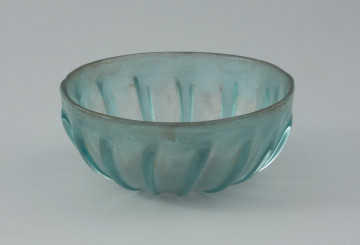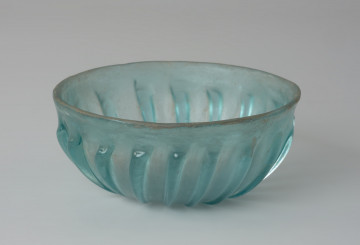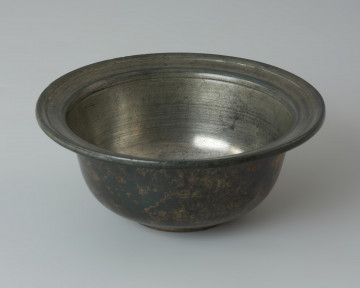
Roman teapot with ribs
National Museum in Szczecin
Part of the collection: Antiquity
The Roman clay plate was made in a technique called “terra sigillata”. This type of ceramics was mass-produced in Roman workshops using moulds. On the bottom of the dish from Gronów there is the maker’s stamp “COOCVSF”. Such plates were produced in workshops in Blickweiler, Heddererheim, in north-eastern Gaul or in Trier. The presented vessel was an element of a richly furnished inhumation grave discovered in 1926 during the construction of a road from Gronów to Złocieniec. The burial contained a second analogous plate, as well as bronze costume accessories, a belt buckle and fittings, a pair of bronze spurs, and imported Roman metal vessels - a jug, a colander and a scoop. The grave, dated to the second half of the 2nd century, was located within the barrow cemetery in Gronów, one of the most important archaeological sites for the study of the Wielbark culture, which occupied most of Pomerania from the 1st to the mid-5th century. Its name comes from the town of Wielbark near Malbork, where a large cemetery of this culture was discovered. The first information about historical objects from Gronów comes from 1881. The initial amateur excavations were carried out in 1881, 1887 and 1890 by pastor Plato from Złocieniec, who noticed the barrows visible in the forest. The area of the site was established in 1939/1940 thanks to further discoveries made during the construction of the Berlin-Szczecin-Gdańsk motorway. Several pit cremation graves were uncovered at this time, excavated by Heinz Hinz and Dr Faust from Drawsko. In the years 1940-1941, the construction of the motorway was abandoned, and the cemetery area was forested. It was not until 1973-1977 that systematic archaeological excavations were conducted by Ryszard Wołągiewicz, an archaeologist from Szczecin. A total of 56 burials were discovered in Gronów, including 49 burials under barrows.
Bartłomiej Rogalski
Author / creator
Dimensions
cały obiekt: height: 4.9 cm
Object type
furnishings and equipment; container; vessel (container)
Technique
forming; pressing
Material
clay
Creation / finding place
Owner
Muzeum Narodowe w Szczecinie
Identification number
Location / status

National Museum in Szczecin

National Museum in Szczecin

National Museum in Szczecin
DISCOVER this TOPIC
National Museum in Lublin
DISCOVER this PATH
Educational path